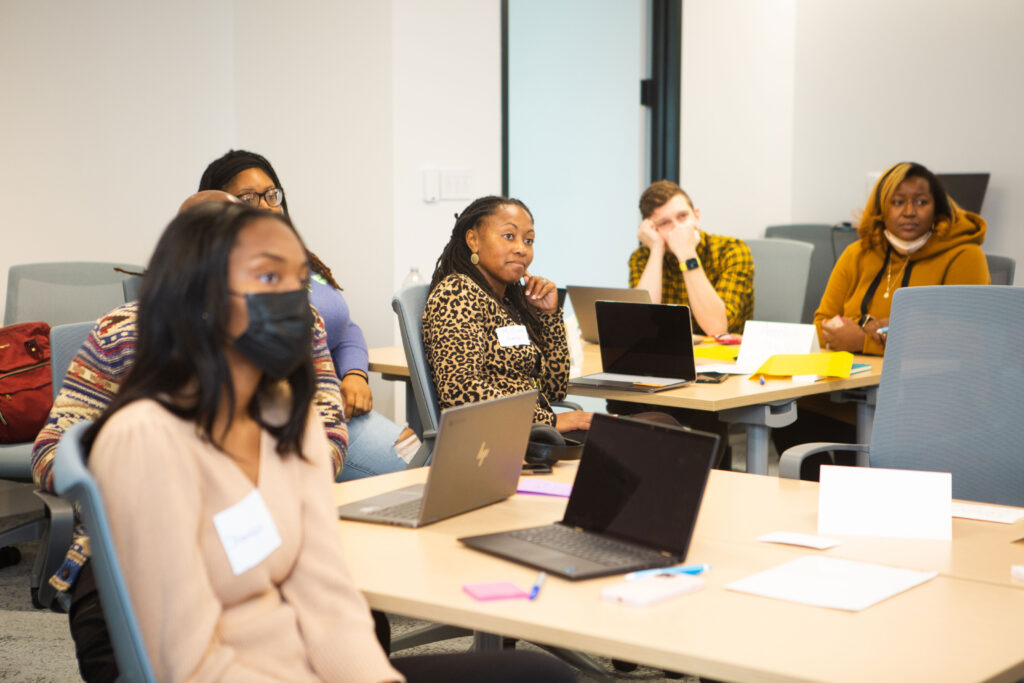In order to design new approaches to challenges in schools, we have to center the experience of students, families, and educators—and build or remake relationships with them.
Entrepreneur Toolkit: empathy interviews.
Tools to Build Empathy and Understanding
There are many great methods for building empathy with stakeholders and those close to a problem. At CityBridge, we embrace many methods; one we prioritize is empathy interviews, which center the experience of students, educators, and families. The core idea behind interviews and other forms of empathy-building research is that in order to design new approaches to challenges in schools, we have to center the experience of those closest to the problem.
Empathy Interview Overview
Use this guide to prepare for and conduct empathy interviews, and to dig into the examples to see how teams of equity designers have generated insights from their work.
Plan and Analyze Interviews
Use this companion tool to plan your interviews. The insights and supporting data are the foundation for the next steps in an equity design process.
Examples
Promising Practice: Empathy Interviews
Read more about the power of empathy interviews as a starting point for a design process in this blog post: Promising Practice: Designing For Equity–Three Steps To Conducting Empathy Interviews.
Empathy Interview Plan Example: House of legends
This example of the interview planning tool is based on the work of Andre Zarate, who participated in the CityBridge Design Fellowship in Fall 2021.
Equity Design Journey Example: Bard High School Early College DC
This document summarizes some of the key moments in the equity design learning process for the team at Bard High School Early College DC. This puts empathy interviews in the context of a longer design process.
More Ways to Learn with Community and Build Empathy
Two additional empathy research methods that we often encourage designers to use are student shadowing and “quick wins.”
- Quick Wins: These short, simple-to-implement activities provide a variety of different methods for learning about what individual students or a larger community of learners think and feel. School Retool offered these as stylish cards. In virtual workshops, we explore the Quick Wins in a digital gallery walk on the MURAL platform. Running a quick win can help teams build muscles around trying new things, before building up to the more involved process of designing and running a pilot. To learn more, read our 2023 guide. Quick Win cards are licensed with CC BY, the Creative Commons Attribution 4.0 International License.
- Shadow a Student using the Shadow a Student Challenge Toolkit. Learn about how students actually experience school by setting aside time on your calendar to follow them through some of all of their day. Go where they go; do what they do; see school through their eyes. Learn more about this method and how to facilitate it for others using this version of the tool from Transcend Education.
We borrow tools for these methods from the School Retool program developed by IDEO and the Stanford d.school K12 Lab. This list is hardly exhaustive, and there are many other creative ways of building empathy.

“Before today’s workshop, I used to think that empathy interviews were the only tool to gain insight into our problem statement, but after today’s workshop, I now think there are a variety of ways/activities to provide more insight/information.”
Fellowship participant, 2022
Historical Context Matters: DC History and Trend Cards
Challenges facing our communities are often rooted in the past. As a way to consider just some of the multi-faceted history of Washington, DC that shapes public education, CityBridge has developed a set of “history and trends cards.” Each of the slides in this deck captures important facts and data about the history or current state of affairs in DC. Participants in the Design Studio program begin their work by reviewing and reflecting on these trends.
Note that the cards are a living document that we update periodically.
In order to understand the present time and space we occupy, we must understand the inherited legacy surrounding the thing we are designing, the place we are designing in, and the community we are designing with.
equityxdesign
